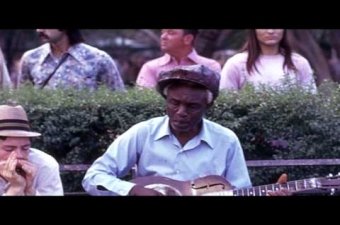Holt Cemetery
527 City Park AvenueNew Orleans LA 70119
Holt Cemetery was established in 1879 for the interment of indigent New Orleanians. It was located outside the city center to staunch the spread of yellow fever. Unlike those in the rest of the city, graves in Holt Cemetery are in-ground. Families pay for burials here, and the plot is free as long as they maintain it (the actual level of maintenance varies widely). Many markers here were built and inscribed by hand, and are still decorated with personal effects reflecting the loved one’s occupation, tastes, and religious beliefs.
Holt is the final resting place of Charles “Buddy” Bolden, a cornetist and bandleader born in 1877, considered one of the progenitors of what would come to be called jazz. Though no known recordings of Bolden exist, contemporary musicians and audiences raved about his distinctive style, which was emotive and danceable. Sadly, Bolden suffered a mental collapse and was put in an asylum in 1907, where he died 24 years later. He was buried here in an unmarked grave, though a marker was erected to honor him in 1996. “King Bolden” has become a mythic figure, inspiring novelists and painters as well as generations of musicians.
Jessie Hill is buried here, too. Hill, who played drums with Professor Longhair, became famous for singing “Ooh Poo Pah Doo,” a hit for Minit Records in 1960. A member of the prodigious Ninth Ward musical family the Lasties, Hill’s legacy lives on in his grandchildren James “Twelve” Andrews and Troy “Trombone Shorty” Andrews.
Delta blues guitarist and singer Jewell “Babe” Stovall is interred here as well. Born in Tylertown, Miss., in 1907, Stovall moved to New Orleans in the 1960s, where he was one of only a few guitarists in town to play a “country” fingerpicking style. He was also known to play guitar behind his head.
Videos

An interview of Babe Stovall by Mark Huffman in 1974.
Video posted by Mark Huffman.
An interview of Babe Stovall by Mark Huffman in 1974.
Images



















